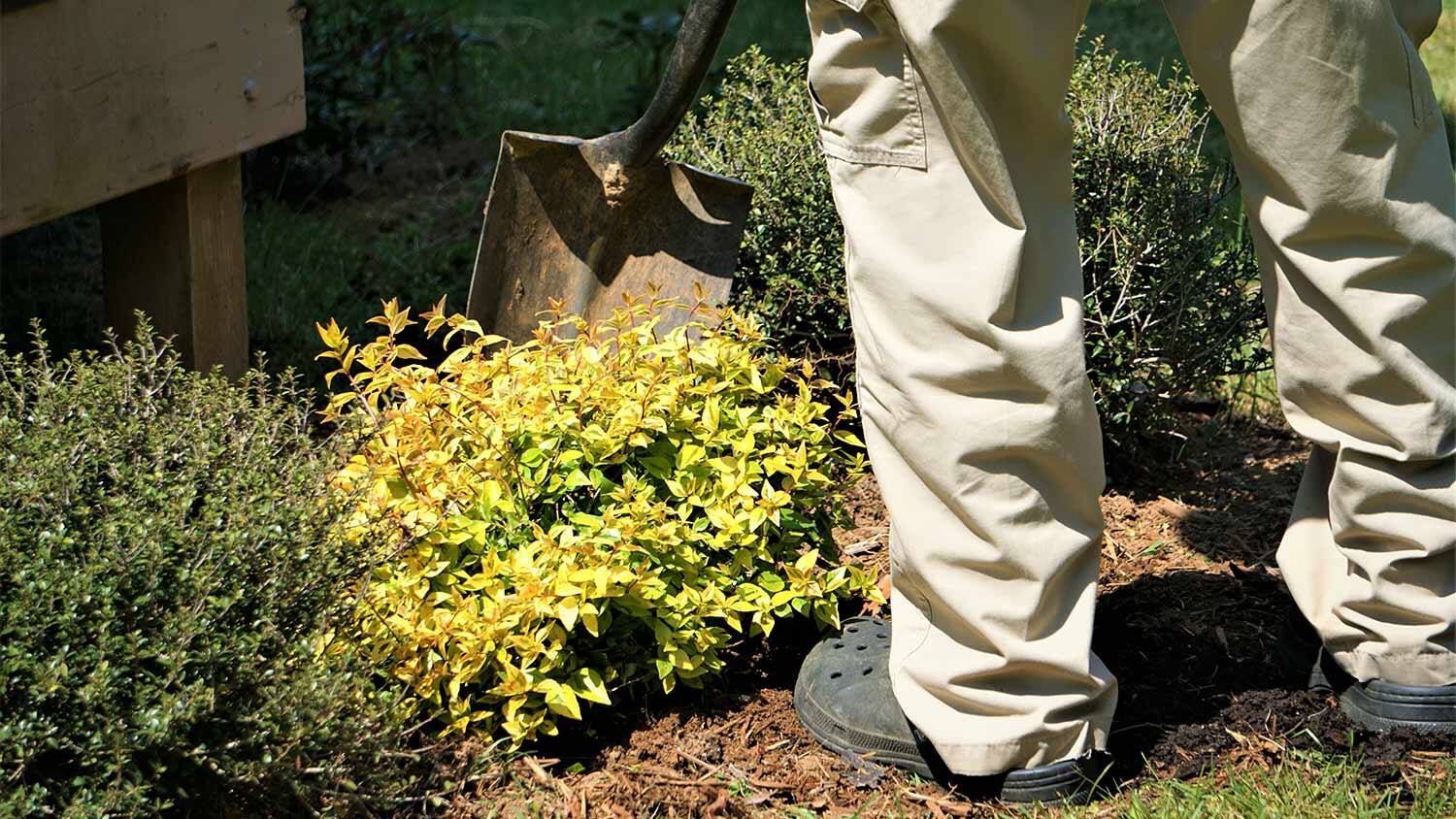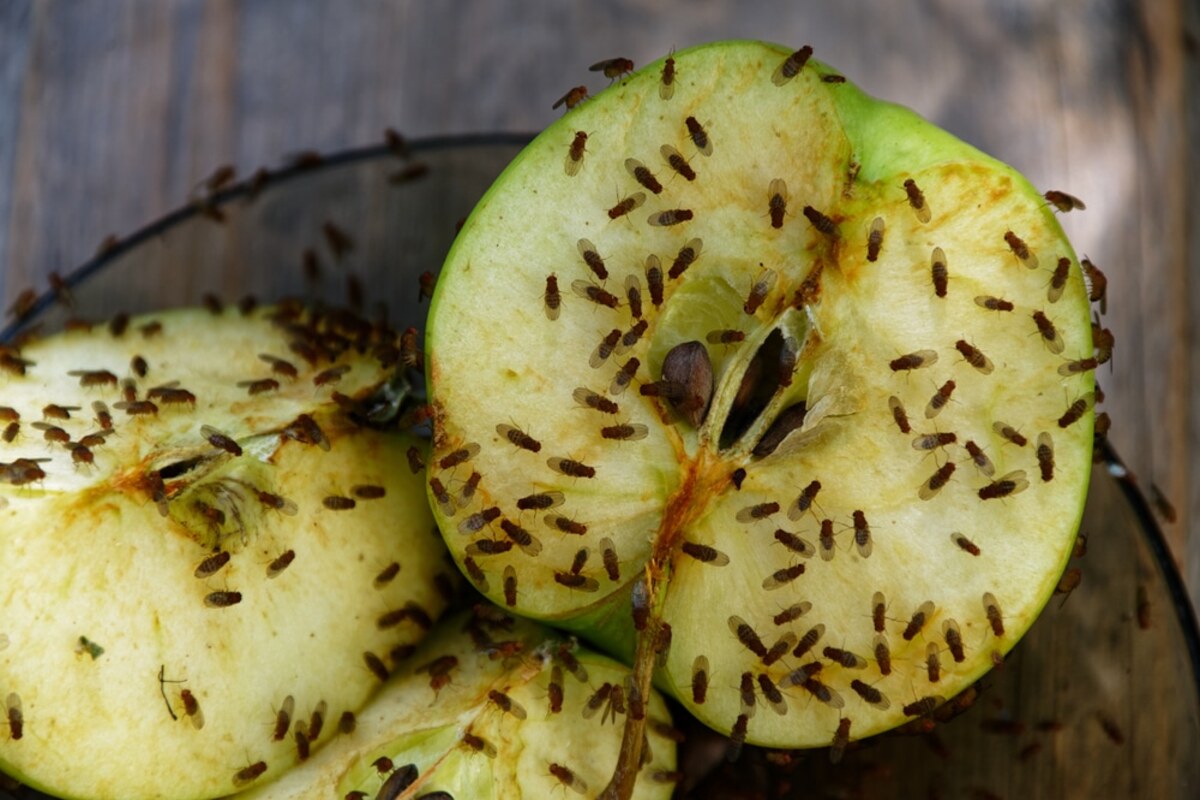Home>Gardening Tips and Tricks>Problem Solving>How To Get Rid Of Spider Mites In Soil


Problem Solving
How To Get Rid Of Spider Mites In Soil
Published: February 6, 2024
Learn effective methods for problem solving and eliminating spider mites from your soil. Get expert tips on how to tackle this common gardening issue.
(Many of the links in this article redirect to a specific reviewed product. Your purchase of these products through affiliate links helps to generate commission for Chicagolandgardening.com, at no extra cost. Learn more)
Table of Contents
Introduction
Welcome to our guide on how to get rid of spider mites in soil. Spider mites are tiny pests that can wreak havoc on your beloved plants, causing damage and hindering their growth. If you’re experiencing a spider mite infestation in your garden or indoor plants, this article will provide you with valuable insights and effective solutions to eliminate them.
Spider mites belong to the arachnid family and are known for their ability to reproduce rapidly, making them a persistent nuisance for plant owners. These minuscule pests thrive in warm and dry environments, making them particularly challenging to control. They feed on the sap of plants, creating tiny, discolored spots on the leaves and eventually leading to leaf damage and plant death if left untreated.
Identifying and addressing a spider mite infestation in its early stages is crucial to prevent further damage to your plants. In this guide, we will explore various methods to identify spider mite infestations and provide you with effective strategies for eliminating them from your soil. We will also discuss preventive measures to minimize the risk of future infestations.
It’s important to note that spider mites can be challenging to eradicate completely, but with a combination of natural remedies, chemical control options, and proactive prevention, you can significantly reduce their numbers and protect your plants’ health. Let’s dive in and learn how to tackle this common gardening problem!
Understanding Spider Mites
Before we delve into methods to get rid of spider mites in soil, it is important to have a clear understanding of these pesky creatures. Spider mites are tiny arachnids that belong to the Tetranychidae family. They are not actually insects, but rather distant relatives of spiders and ticks. Despite their name, spider mites are closely related to spiders and ticks rather than actual mites.
These minuscule pests measure only about 0.5 millimeters in size, making them difficult to spot with the naked eye. However, their impact on plant health can be significant. Spider mites are common pests in gardens and indoor plants, particularly in warm, dry environments. They thrive in temperatures around 80 to 90 degrees Fahrenheit and tend to infest plants during dry spells when moisture levels are low.
Spider mites feed on plant sap by piercing the plant cells with their mouthparts. This feeding behavior causes noticeable damage to the leaves, resulting in yellowing, stippling, or dot-like discoloration. As the infestation progresses, the leaves may become webbed or develop silvery streaks. If left untreated, the plant’s overall health may deteriorate, leading to stunted growth, leaf loss, and ultimately, plant death.
Spider mites reproduce at a rapid pace, with females laying hundreds of eggs during their lifespan. This means that a small infestation can quickly escalate into a widespread problem if not addressed promptly. Additionally, spider mites are known for their ability to develop resistance to chemical pesticides, further complicating pest management efforts.
Understanding the life cycle and habits of spider mites is essential for effective control. Knowing when they are most active, how they reproduce, and the signs of infestation can help you tailor your approach to eradicate these pests from your plants. In the next sections, we will discuss how to identify spider mite infestations and explore effective strategies to eliminate them from the soil.
Identifying Spider Mite Infestation
In order to effectively combat spider mite infestations in soil, it is crucial to be able to identify their presence. While spider mites themselves are tiny and often difficult to see, there are several signs to look out for that indicate an infestation.
One of the most common indicators of spider mites is the presence of webbing. These pests produce fine, silk-like strands that they use to create webs on the undersides of leaves, between branches, and around flowers. The presence of webbing is a clear sign of an infestation, even if the mites themselves are not immediately visible.
Another telltale sign of spider mite infestation is the appearance of small white or yellow specks on the leaves. These specks, known as stippling, occur when mites puncture plant cells to feed on sap. Stippling often creates a dotted or mottled appearance on the leaves, and if left untreated, it can lead to significant damage.
Additionally, closely inspect the undersides of leaves with a magnifying glass. Spider mites are typically found on the undersides of leaves, where they can feed on the plant’s sap unseen. Look for tiny, oval-shaped creatures with eight legs. Spider mites may vary in color, ranging from yellowish-green to reddish-brown, depending on the species and life stage.
Pay attention to the overall health and appearance of your plants as well. If you notice leaves turning yellow, wilting, or curling at the edges, it could be a sign of spider mite infestation. As the infestation progresses, the leaves may become dry and brittle, and the plant may exhibit overall stunted growth.
It’s important to note that spider mites are not easily detectable in the early stages of an infestation, as their populations can grow rapidly. Regularly monitoring your plants for any signs of discoloration, webbing, or specks on the leaves can help catch an infestation early before it spreads and becomes more challenging to control.
By being vigilant and proactive in identifying spider mite infestations, you can take prompt action to eliminate them and protect the health of your plants. In the next section, we will explore the reasons why spider mites commonly infest soil, helping you to address the root causes of their presence.
Reasons for Spider Mite Infestation in Soil
Understanding the reasons behind spider mite infestations in soil is key to preventing and addressing them effectively. While spider mites can infest plants in various environments, several factors contribute to their prevalence in soil.
1. Environmental Conditions: Spider mites thrive in warm and dry conditions, making them more prevalent during hot summer months or in areas with low humidity. Dry soil and lack of adequate moisture can create an ideal environment for spider mites to multiply and infest plants.
2. Lack of Natural Predators: In a balanced ecosystem, predatory insects and mites play a crucial role in keeping spider mite populations in check. However, certain factors, such as the use of chemical pesticides or the absence of natural predators in a particular area, can disrupt this natural control mechanism, allowing spider mite populations to grow unchecked.
3. Infested Plants: Spider mites can spread from one plant to another, so if you introduce a new plant to your garden or indoor space that is already infested with spider mites, they can easily transfer to other plants in the vicinity. It is important to inspect new plants for any signs of infestation before incorporating them into your indoor or outdoor garden.
4. Stress and Weak Plants: Weak or stressed plants are more susceptible to spider mite infestations. Factors such as inadequate nutrition, improper watering, or other pests can weaken plants, making them more vulnerable to spider mite attacks. It is crucial to maintain healthy and robust plants to minimize the risk of infestation.
5. Overcrowding: Overcrowding of plants can create an environment that is conducive to spider mite infestations. When plants are densely packed, it limits air circulation, providing favorable conditions for mites to multiply. Proper spacing between plants allows for better airflow and reduces the risk of infestation.
By understanding these reasons for spider mite infestation in soil, you can take appropriate measures to address the underlying issues and prevent future infestations. In the next section, we will explore preventive tips to keep spider mites at bay from your plants and soil.
Prevention Tips for Spider Mite Infestation
Preventing spider mite infestations in soil is key to maintaining healthy plants and minimizing the need for extensive treatments. By implementing the following preventive measures, you can create an environment that is less favorable for spider mite populations to thrive.
1. Monitor and Inspect Regularly: Regularly inspect your plants for any signs of spider mites or their webbing. Pay close attention to the underside of leaves, as this is where they typically reside. Early detection can help prevent infestations from spreading and causing significant damage.
2. Maintain Optimal Environment: Spider mites thrive in warm and dry conditions. To mitigate their presence, ensure proper moisture levels in the soil. Regularly water your plants, aiming to keep the soil consistently moist but not excessively wet. Increase humidity levels by misting the leaves or placing a humidifier nearby.
3. Introduce Natural Predators: Encourage beneficial insects and mites that prey on spider mites, such as ladybugs, lacewings, and predatory mites, to your garden. You can attract them by planting companion plants that provide shelter and food sources for these predators.
4. Practice Proper Plant Hygiene: Remove any fallen leaves or debris from the soil, as they can serve as a breeding ground for spider mites. Promptly dispose of any infested plant material to prevent the infestation from spreading to healthy plants.
5. Provide Adequate Space: Ensure proper spacing between plants to allow for better air circulation and reduce the risk of overcrowding. This helps create an environment less conducive to spider mite infestations.
6. Avoid Overfertilization: Spider mites tend to thrive on plants that receive excessive nitrogen fertilizers. Avoid overfertilizing your plants, as this can make them more susceptible to infestation. Instead, follow a balanced fertilization schedule appropriate for the specific needs of your plants.
7. Quarantine New Plants: Before introducing new plants to your garden or indoor space, inspect them carefully for any signs of spider mite infestation. Quarantine the new plants for a few days to monitor them for any signs of pests before placing them near your existing plants.
By implementing these preventive tips, you can significantly reduce the risk of spider mite infestations in your soil, promoting the overall health and vitality of your plants. In the next section, we will explore natural remedies for getting rid of spider mites in soil.
Natural Remedies for Getting Rid of Spider Mites in Soil
If you prefer to avoid the use of chemical pesticides, there are several natural remedies you can try to eliminate spider mites from your soil. These methods are effective in controlling infestations and protecting the health of your plants. Let’s explore some of these natural remedies:
1. Water Spray: A forceful spray of water can dislodge spider mites from the plant foliage. Use a hose with a nozzle attachment to spray the leaves, focusing on the undersides where the mites tend to reside. Repeat this process regularly to disrupt their life cycle.
2. Neem Oil: Neem oil is a natural insecticide that has both antifeedant and repellent properties. Dilute neem oil according to the manufacturer’s instructions and spray it on the leaves to control spider mites. Ensure thorough coverage to reach the hidden mites and their eggs.
3. Predatory Insects: Introduce predatory insects such as ladybugs, predatory mites, or lacewings to your garden. These natural predators feed on spider mites and help keep their population in check. You can purchase these beneficial insects from garden centers or online suppliers.
4. Insecticidal Soap: Insecticidal soaps, made from natural fatty acids, can suffocate spider mites and other soft-bodied pests. Dilute the soap according to the manufacturer’s instructions and apply it to the affected plants. Ensure thorough coverage, especially on the undersides of leaves.
5. Essential Oils: Certain essential oils have insecticidal properties that can repel and disrupt spider mites. Mix a few drops of essential oils like peppermint, rosemary, or clove oil with water and spray the solution on the plants. Repeat regularly to control the infestation.
6. Reflective Mulch: Placing reflective mulch, such as aluminum foil or silver-colored plastic, around the base of plants can repel spider mites. The reflective surfaces disorient the mites and discourage them from infesting the plants.
7. Maintaining Plant Health: Keeping your plants healthy and resilient is essential for preventing and combating spider mite infestations. Ensure proper watering, provide adequate nutrients, and promptly address any other issues that can weaken plants and make them more susceptible to infestations.
Remember, natural remedies may require repeated applications and are most effective when used in combination with other preventive measures. Regular monitoring and persistence are key to successfully eradicating spider mites from your soil using natural methods.
In the next section, we will explore chemical control options for severe spider mite infestations in soil.
Chemical Control of Spider Mites in Soil
While natural remedies are often effective in controlling spider mites in soil, severe infestations may require the use of chemical control methods. These methods involve the application of insecticides specifically formulated to target spider mites. It is important to follow the instructions provided by the manufacturer and use chemical pesticides responsibly. Here are some options for chemical control:
1. Miticides: Miticides are specifically designed to target mites and are available in various formulations such as sprays, liquids, or concentrates. They work by disrupting the mites’ nervous system or inhibiting their ability to reproduce. It’s important to choose a miticide that is labeled for use on the specific plants affected by spider mites and follow the dosage and application instructions carefully.
2. Systemic Insecticides: Systemic insecticides are absorbed by the plant, making them effective against spider mites that feed on the plant sap. These insecticides can be applied as soil drenches, granules, or injected into the plant’s stem. They provide long-lasting control and are particularly useful for larger plants or extensive infestations.
3. Acaricides: Acaricides are insecticides specifically formulated to target mite infestations. They can be applied directly to the plant foliage or used as soil treatment. Like miticides, acaricides should be used according to the manufacturer’s instructions and precautions to ensure effective control of spider mites.
When using chemical control methods, it is important to consider the potential impact on beneficial insects, pollinators, and the environment. If feasible, spot treat affected plants rather than using widespread applications. Additionally, rotate between different chemical control products with varying modes of action to reduce the risk of spider mites developing resistance.
It is crucial to follow all safety precautions when handling and applying chemical pesticides. Wear protective clothing, gloves, and a mask if necessary to avoid direct contact with the product. Keep children and pets away from treated areas until the recommended re-entry time has passed.
While chemical control methods can provide effective results, they should be used as a last resort when natural and preventive methods have failed to control severe infestations. Regular monitoring and maintenance of plant health, in combination with natural remedies, can help minimize the need for chemical pesticides.
Finally, in the following section, we will conclude our guide on getting rid of spider mites in the soil by summarizing the key points and offering final thoughts.
Conclusion
Dealing with spider mite infestations in soil can be a challenge, but with the right knowledge and strategies, it is possible to eliminate these pests and protect the health of your plants. By understanding the signs of infestation and implementing preventive measures, such as regular monitoring, maintaining optimal environmental conditions, and introducing natural predators, you can greatly reduce the risk of spider mite infestations.
If an infestation does occur, natural remedies like water sprays, neem oil, predatory insects, insecticidal soaps, and essential oils can be effective in controlling spider mites. For severe infestations, chemical control options such as miticides, systemic insecticides, and acaricides can be considered, but should be used responsibly and as a last resort.
Remember, prevention is key. By practicing proper plant hygiene, providing adequate space, avoiding overfertilization, and quarantining new plants, you can create an environment that is less favorable for spider mites to establish and multiply. Regular monitoring, early detection, and prompt action are crucial in effectively combating spider mite infestations before they cause significant damage.
Whether you choose natural remedies, chemical control methods, or a combination of both, always follow the instructions provided by the manufacturer and take appropriate safety precautions. Be mindful of the potential impact on beneficial insects and the environment, and strive for a balanced and sustainable approach to pest management.
We hope that this guide has provided you with valuable insights and practical strategies for getting rid of spider mites in soil. By implementing these techniques and staying vigilant, you can protect your plants and enjoy a healthy, thriving garden free from the pesky presence of spider mites.








